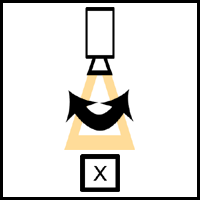The Dark Knight The Dark Knight is an action film released is 2008, and is the sequel to Batman begins, which was released in 2005. The film was created by The Warner Bros. and stars Christian Bale and Heath Ledger. The film reaches out to teenagers, and adults, especially male, and those who are interested in previous comics and films, as the film is rated 12. In the opening sequence, the audience is introduced to the antagonist, The Joker, which is different from most films as they usually establish the scene or introduce the protagonist. Throughout the clip we learn more about The Joker through other characters as they mention him, and he is only revealed at the end of the sequence when he takes of his mask, and realise that the Joker goon was actually himself. This shocks the audience as it's a big reveal, and they had been trying to piece together what was happening in this scene, but then the main villain is revealed to them. In the opening scene, the character of The...











